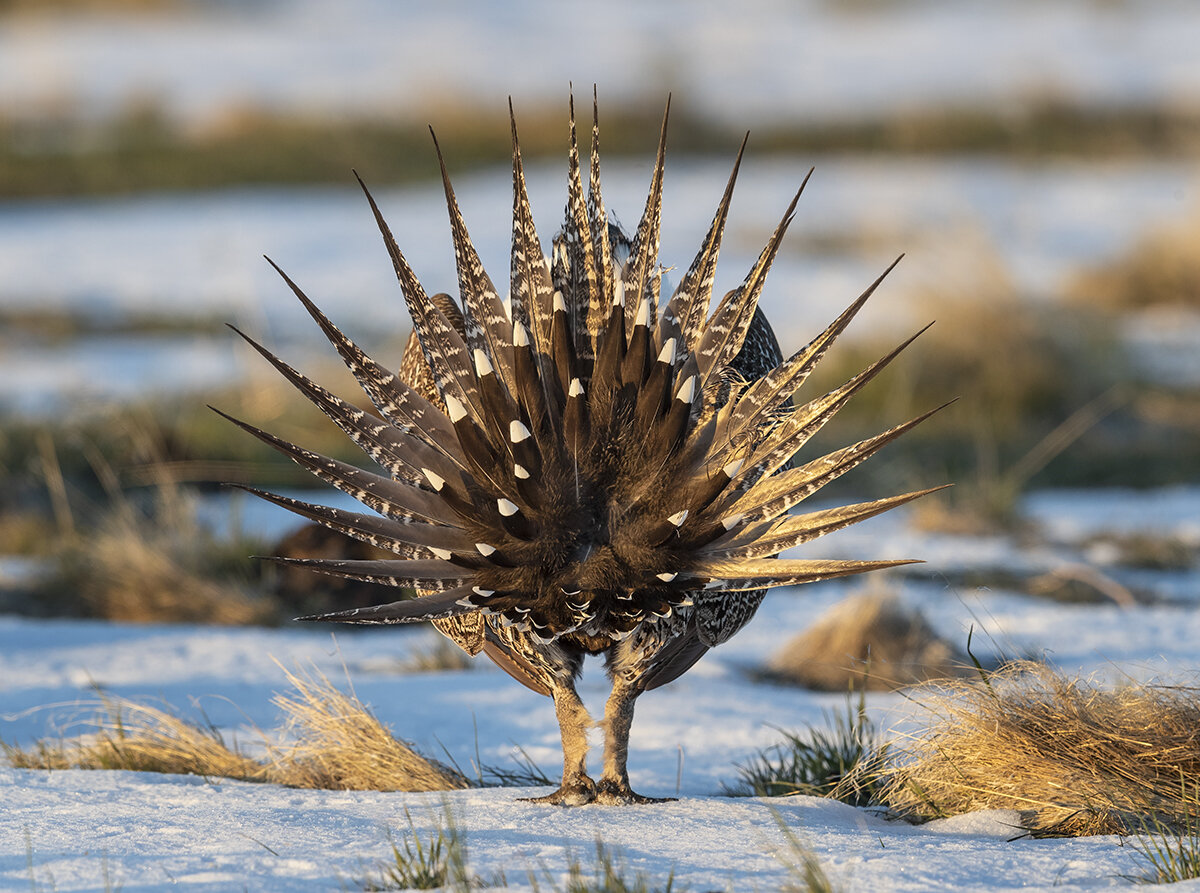Birds that Boogie!
A male Greater Sage Grouse at the moment he pulls down his head and blows out his air sacs.
If you have never had the opportunity to view the mating display of the greater sage grouse, you might find yourself wondering just what the heck is going on in photos like the one above. The ritual performed by the males as they try to attract a mate is both fascinating and somewhat comical. Add in the fact that the maneuvers the birds go through sound like nothing so much as the burbling and popping of a coffee percolator and you have a spectacle that proves itself to be highly entertaining!
Two males vie for the attention of a sage grouse hen, right.
Almost 40% of the world’s population of greater sage grouse call Wyoming their home. Despite that, it is not that common to see the big birds unless you make the effort to observe their mating dance in early spring or you happen to stumble across a mama with a brood of chicks in late summer.
In order to see the mating ritual you need to know where to find the lek - “a traditional place where males assemble during the mating season and engage in competitive displays that attract females” - and you need to take steps to ensure you are in place and quietly hidden before the daily routine begins before sunrise.
A male sage grouse begins the movement that will result in a musical display as he pops his air sacs.
The movement is almost violent, appearing very much like a forced sneeze.
Male sage grouse are as beautiful from the back as they are from the front as they spread their tail feathers in display.
A number of things determine the success of a male sage grouse in finding a hen with which to mate. Position in the lek is extremely important with the center of the dance floor being the most desirable. In addition to their intricate dance steps, males will fight each other to keep their spot and females will often head straight for the middle of the lek to choose a partner. One of the reasons it is so critical for the males to be number one is that all the hens in a lek may mate with only one or two males in a season. It is possible that all the chicks in a given year are fathered by one particular male in the group.
Two male sage grouse fight for position in the lek.
By some estimates, the number of greater sage grouse has declined by 90% in the last few decades. With statistics like that it is hard to understand why the birds are considered “Near Threatened” rather than “Endangered”. It is even more difficult to understand why the state still allows a hunting season for the species.
One of the reasons given for keeping the birds off the endangered species list is that the state and private citizens are working hard to protect remaining populations of the birds but most people are very concerned about the success of such efforts.
A sage grouse glows in the early morning light of sunrise.
To hear more about the Greater Sage Grouse and their mating dance, be sure to listen to my podcast on the subject by clicking the button below, or by downloading the latest episode from Apple Podcasts or Spotify.






